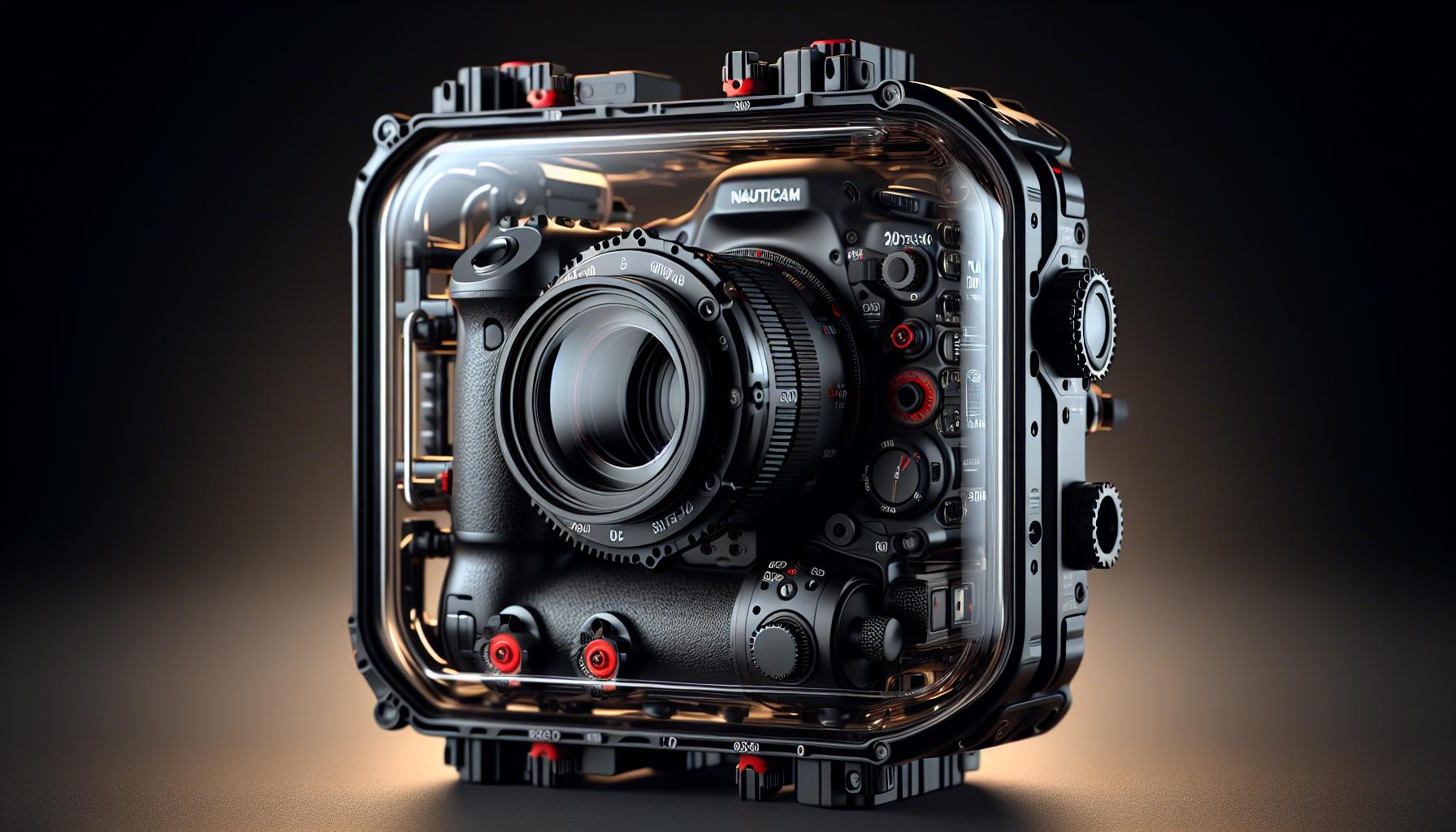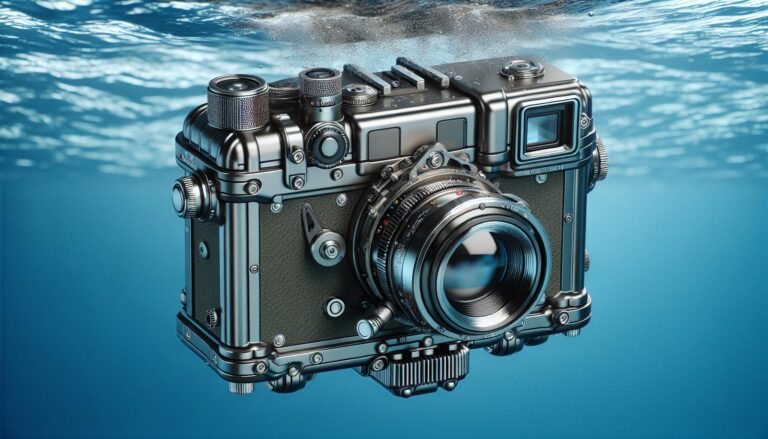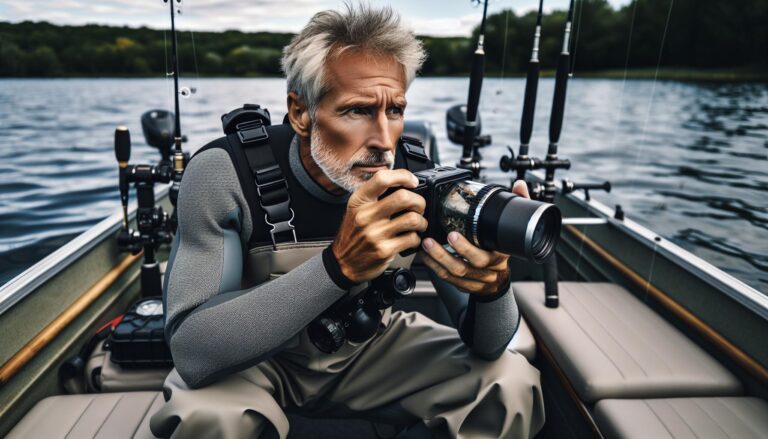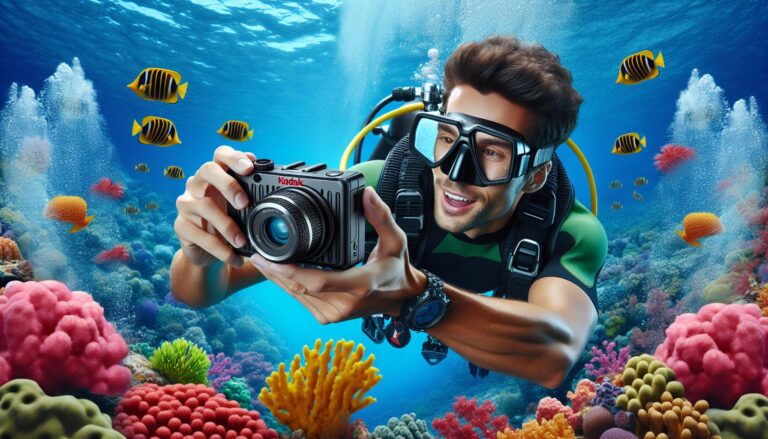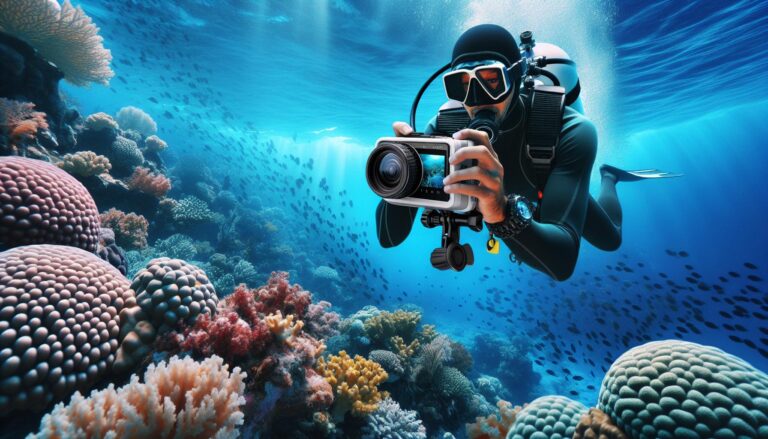Choosing the Best Underwater Camera Housing: A Detailed Guide & Reviews
As an underwater photography enthusiast, I’ve learned that the key to capturing the unseen beauty of the aquatic world lies in the quality of your gear. And at the heart of that gear? Underwater camera housing. It’s the unsung hero, the protective shell that safeguards your precious camera from the crushing pressures and unpredictable elements of the deep.
But how do you choose the right housing for your camera? What factors need to be considered? I’ll guide you through the labyrinth of underwater camera housings, helping you to make an informed decision that’ll elevate your underwater photography to new depths. So, let’s dive right in and explore this fascinating topic together.
Understanding Underwater Camera Housing
Diving a bit deeper, let’s decipher the nuances of underwater camera housing, amplifying its significance and the diverse types available in the market.
Importance of Underwater Camera Housing
Undoubtedly, an underwater camera housing serves as the line of defense for your camera. It protects the delicate components of your camera from not just water but also from high pressure, corrosive salt, and other abrasive elements found under the sea. These pressurized casings ensure that your photography equipment is safe, enabling it to capture the surreal beauty of the underwater world flawlessly. For instance, a tightly sealed housing can protect your camera to depths of up to 200 meters, all the while safeguarding it against sand, silt, and marine organisms that may otherwise lead to device malfunction or total failure.
Different Types of Underwater Camera Housings
Understanding the range of underwater camera housings aids in making an informed choice, suiting your specific needs and photography style. Primarily, housings categorize into three types – Polycarbonate, Aluminum, and Clear Plastic.
- Polycarbonate Housings: Lightweight, affordable, and exceptionally resistive to corrosion, polycarbonate housings offer excellent durability. Their clear design allows visual inspection of the camera and the O-ring seal, indirectly indicating any potential leak points.
- Aluminum Housings: These are robust, providing superior control with numerous buttons and dials replicating the camera’s own controls. The perfect fit for professionals, aluminum housings, however, command a higher price and demand more maintenance.
- Clear Plastic Housings: Regarded as the cheapest option, they offer basic functionalities. While they do provide an inexpensive alternative for infrequent divers, they do not match the capabilities of polycarbonate and aluminum housings.
Each type, with its unique characteristics, caters to different underwater photography demands. Selecting an apt one requires balancing between your budget, frequency of diving, and the level of control desired during the diving sessions.
Choosing the Right Underwater Camera Housing
A correctly chosen underwater camera housing defines the boundaries of your underwater photography. Attaining the best depends on understanding the various elements influencing its effectiveness.
Factors to Consider When Buying
Getting a perfect underwater camera housing isn’t just a matter of payroll. Consider the following factors:
- Depth Rating – Every housing offers a depth rating (example: 10 meters, 40 meters), specifying the maximum depth at which it’s designed to function.
- Ease of use – Look for a housing with controls that are easy to operate, even with diving gloves on.
- Maintenance – Regular cleaning and maintenance extend the life of the housing. Choose a housing designed to simplify these tasks.
- Size and Weight – The size and weight impact portability. Lightweight housings, which are also compact in size, make diving and traveling easier.
- Material – Polycarbonate, aluminum, and clear plastic housings are the usual options. Each material has distinct strengths and weaknesses. A housing made of aluminum, for instance, is durable and capable of withstanding high pressure but is more costly than polycarbonate or clear plastic housings.
Housings for Various Types of Cameras
Underwater camera housings aren’t one-size-fits-all. Here’s a quick rundown on housings specific to camera types:
- DSLR Housings – These are designed to accommodate all DSLR camera models. They are often constructed with aluminum due to their durability and pressure resistance.
- Mirrorless Camera Housings – These housings are usually lighter and smaller than DSLR housings, making them an excellent choice for divers who prefer compact gear.
- Compact Camera Housings – Perfect for beginners in underwater photography. They’re cost-effective and lightweight, still, they accommodate limited camera features.
- Video Camera Housings – These are specially designed for video cameras. They need reinforcements to handle the extra stress from prolonged use, like handling higher heat levels generated by the camera.
In totality, while choosing the perfect underwater camera housing, remember that it’s a combination of addressing your needs and the type of camera you wield.
Underwater Camera Housing Brands
I invite you on this journey to dive into the realm of underwater camera housing manufacturers. Let’s examine some of the leading, as well as promising, brands in this market.
Top Brands on the Market
When discussing underwater camera housing, several brands consistently secure their place as frontrunners.
- Ikelite: Ikelite, a prominent figure since 1962, dominates the market with housings that balance durability and accessibility. Recognized especially for their Polycarbonate housings, their products showcase superior corrosion resistance.
- Nauticam: Provides an innovative range of aluminum housings. Their designs guarantee ease of control access, which is crucial for challenging underwater shoots.
- Sea&Sea: They’ve made a name for themselves by crafting compact, lightweight, yet sturdy clear plastic housings.
Innovative Brands to Watch
Exciting developments in the space come from a wave of innovative brands featuring groundbreaking materials and design features.
- Meikon: Meikon pushes boundaries with budget-friendly, yet exceptionally reliable housings. Their focus lies in accommodating a wide array of camera models, making underwater photography more accessible.
- Aquatica: Aquatica combines superior functionality with unparalleled ergonomics, resulting in a brand that’s not just innovative, but also user-friendly.
- Isotta: Known for their sleek red aluminum exteriors, Isotta marries form and function. They’ve been gaining traction for their comprehensive selection tailored for both DSLR and mirrorless cameras.
Maintenance and Care of Underwater Camera Housing
In the world of underwater photography, the camera housing serves as the knight in shining armor, protecting your prized possession from water and pressure. Sure, choosing an appropriate housing is vital, but maintaining it correctly eats the bigger chunk of the pie. To ensure optimal performance, regular cleaning and cautious storage are must-dos. Let’s look at some key tips.
Regular Maintenance Tips
Camera housings thrive with habitual care. After every dive, rinse them in fresh water to remove salt, chlorine, and debris. Scrub lightly with a soft brush if needed. Pay special attention to control knobs and buttons – areas that stubborn residues like to hide. Make it a point to air dry the housing naturally, sun’s heat may damage it, remember, patience rewards.
Regular checks for O-ring, a major player in preventing leaks, is crucial. Keep them clean, free from dust, hair, sand, or any greasiness. A dab of silicone grease keeps them flexible and seal-tight.
IT’s equally important to maintain the housing’s lens port. Blemishes or scratches on ports might ruin your perfect shots. A gentle rub with toothpaste or baking soda can easily remove minor scratches.
Handling and Storage of Housing
Handle with Care, they say, and rightly so. While transporting, use padded case, soft wrap, or bubble wrap. Don’t stack them, give them some breathing room.
When it comes to storing, pick a cool, dry place and avoid direct sunlight. Keep them sealed in a bag with silica gel to absorb any moisture. The major rule to remember – Never store with O-rings in place. Leaving O-rings on might cause them to lose their elasticity leading to possible leaks. So always remove and store them separately.
Remember, more than any costly equipment, regular maintenance and proper handling prolongs the life of your underwater housing and by extension, your photography journey. Do these right, and the underwater world is yours to capture.
Advanced Features and Accessories
Building on the foundation of standard underwater camera housing, making the most of advanced features and accessories elevates the overall performance. Let’s turn our attention to some additional features for improved performance and must-have accessories that push your underwater photography to new depths.
Additional Features for Enhanced Performance
To maximize your underwater photography potential, you’ll benefit from certain advanced features. Depth-rated domes, built-in vacuum check and leak detection systems, and ergonomically placed control buttons stand at the forefront.
- Depth-Rated Domes: The depth-rating of a dome refers to how deep it can safely go underwater. For instance, some domes can withstand depths of 100 meters. A stronger dome ensures greater durability and resilience at greater depths.
- Built-in Vacuum Check and Leak Detection Systems: These systems alert you to any possible leakage in your underwater camera housing. Manufacturers such as Nauticam and Ikelite incorporate this feature in their housings. It offers peace of mind knowing any small leaks can be detected early.
- Ergonomically Placed Control Buttons: An essential feature to consider, especially for underwater use, is easily accessible control buttons. The placement of these controls makes it easier and quicker to adjust camera settings while diving.
Must-Have Accessories for Underwater Photography
While the capabilities of the camera housing itself are paramount, you can’t overlook the importance of strategic accessories. From powerful strobes and essential macro lenses to flex arms and clamps, these additions accentuate your underwater photography experience.
- Strobes: This is an underwater flash unit that becomes especially helpful in low light conditions, enhancing the overall colors in your shots.
- Macro Lenses: Macro lenses enable detailed close-up shots. These are perfect for capturing minutiae of sea life.
- Flex Arms and Clamps: Flex arms and clamps offer flexibility in mounting and adjusting your underwater lighting.
Make use of these features and accessories, and your underwater photography endeavours are bound to produce breathtaking results. After all, getting the right shot underwater involves a mix of proper gear, effective techniques and a discerning eye for detail.
Reviews of Popular Underwater Camera Housings
Let’s delve into the world of popular underwater camera housings, analyzing their features, performance, and user experience.
Detailed Review: Nauticam NA-G7XIII Pro Package
Nauticam leaves a strong impression with its NA-G7XIII Pro Package. The housing, crafted from aircraft-grade aluminum, guarantees durability. Its 100-meter depth rating, coupled with an intricate control placement, ensures easy operation during dives. The NA-G7XIII’s vacuum check and leak detection system, when paired with a compact and efficient design, enhances worry-free underwater photography. In terms of maintenance, the easy-access O-ring ensures streamlined cleaning and replacement procedures. Given these attributes, professional underwater photographers often regard the Nauticam NA-G7XIII Pro Package as an investment worth its price.
Detailed Review: Ikelite 200DL Underwater Housing for Canon 5D Mark III, 5D Mark IV, 5D Mark V
Ikelite’s 200DL Underwater Housing showcases exceptional functionality and a strong depth rating. The housing accommodates Canon 5D Mark III, Mark IV, and Mark V models, employing an ABS-PC blend—a material recognized for its strength and corrosion resistance. Its broad 60-meter depth rating provides solid reliability during extensive deep-water dives. The clear back plate offers a clear view of the camera and the O-ring seal, easing the maintenance efforts. As an added advantage, this housing integrates TTL circuitry, enabling accurate exposure with Ikelite DS strobes. Users praise the 200DL Underwater Housing for its adaptability and intuitive use, making it an appealing choice for divers with Canon 5D models.
Conclusion
So there you have it. Underwater camera housing is more than just a protective shell. It’s a game-changer in the realm of underwater photography. The right housing, whether it’s a sturdy Ikelite model or a feature-packed Nauticam, can make all the difference between a good shot and a great one. It’s not just about durability and depth ratings but also about control placement, maintenance ease, and extra features like vacuum check systems and TTL circuitry for strobes. These aren’t mere accessories but vital tools for serious underwater photographers. They’re investments that pay off in the quality of your work and the longevity of your gear. So, dive into your next underwater adventure with the right housing and see the difference it makes. It’s worth every penny.

